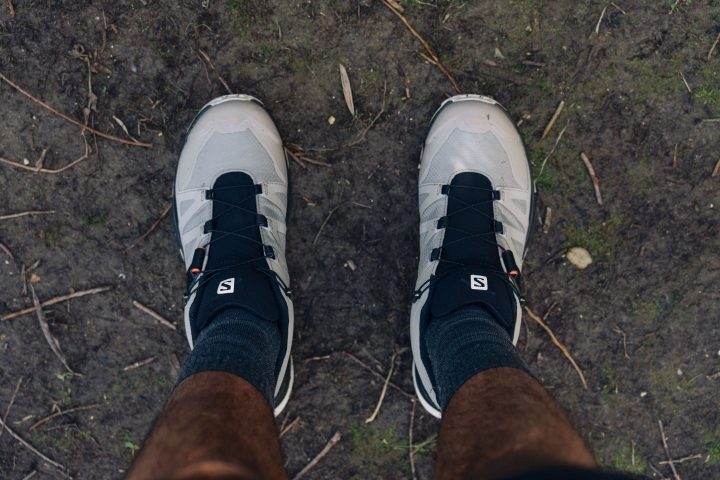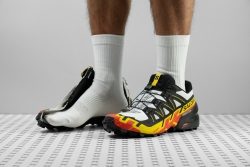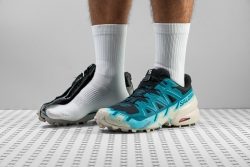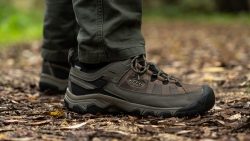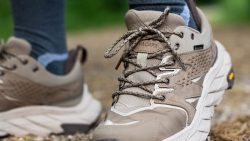4 Best Salomon Hiking Shoes in 2025
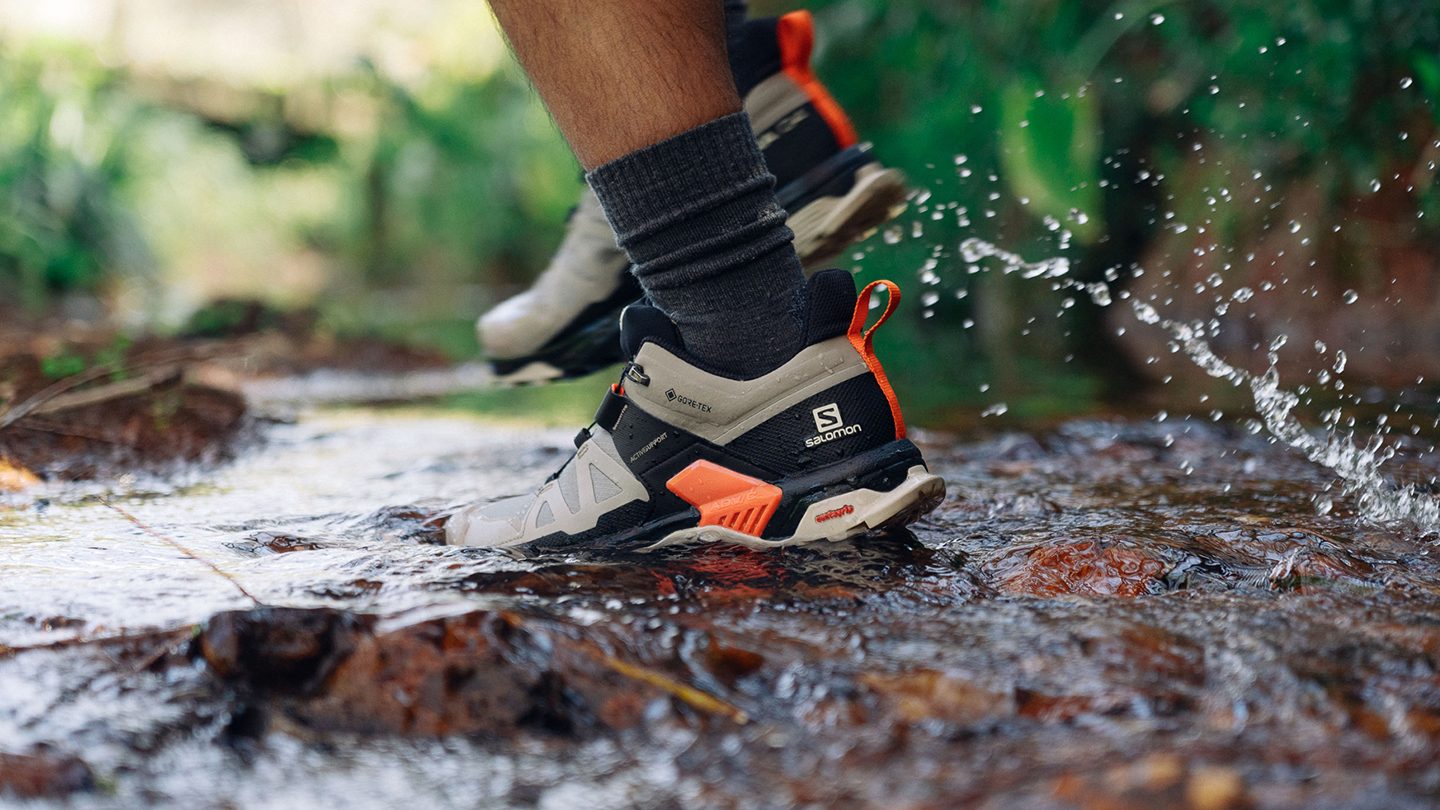
We buy shoes ourselves. We earn commissions when you buy through us, at no extra cost. Why trust us
Are you looking for your next pair of Salomon hiking shoes? If so, you're in the right place.
There’s a lot to dig into here. After testing Salomon hiking shoes out on the hikes and in our lab, where we subjected them to flexibility, breathability, durability, and other tests, we created this best-of-the-best list. We give you many options to choose from—whether you’re into speed hiking, summer-time adventures, or daily excursions in and around water.
How we test Salomon hiking shoes
How we review Salomon hiking shoes
The best Salomon hiking shoes don’t spring up on their own. We test every pair, both on the trails and in our lab. Here is what our process looks like, step by step:
- We buy all Salomon trail shoes with our own money to stay objective.
- We put every Salomon shoe through rigorous testing in different conditions—both weather-wise and terrain-wise.
- We test and measure different parameters inside our lab! From lug thickness and traction to breathability and shock absorption. And yes, cutting the shoes in half is a part of the process.
Best Salomon hiking shoes overall
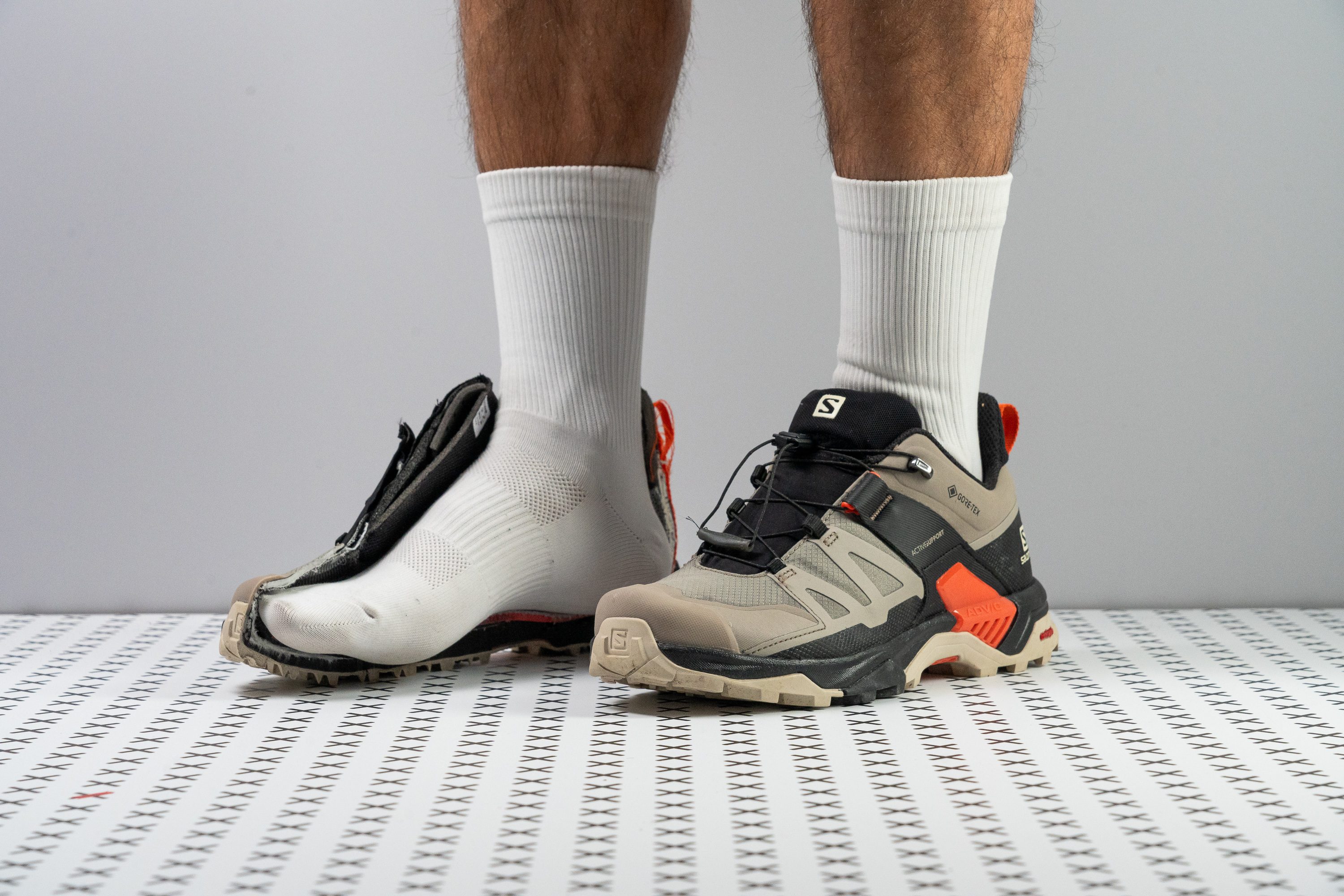











































What makes it the best?
We extensively tested a number of Salomon shoes both in the lab and out on the trail. The X Ultra 4 GTX took the top place as the best overall hiking shoe from Salomon because it is ultra-lightweight, versatile, and has perfect cushioning.
On our test hikes, our feet stayed completely dry even when we splashed through streams! Of course, we had to be careful not to go in over the ankle, but the X Ultra 4 GTX shows that it is possible to get impeccable waterproofing without piling on the weight. We weighed it in the lab and found it to be 13.3 oz (378g), 5% lighter than average for hiking shoes. This makes it a great choice for thru-hikes when we need to conserve energy and prevent blisters.
In the lab, we tested the softness of the midsole. Our durometer claimed the midsole measures 32.5 HA, the average for hiking shoes. We find this is the perfect middle ground between decent protection underfoot and a comfortable ground feel.
The shoe works wonders in the stability department. A shank in the midsole stiffens the midfoot, preventing our feet from rolling on rough trails. At the same time, we felt a distinct spring in our step, so in the lab, we bent the shoe to 30°. We measured 20.9N, making it 14.2% stiffer than average! This makes for a supportive shoe for long hikes.
Simulating winter temperatures, we put the shoe in the freezer for 20 minutes and tested it again. It becomes a whopping 75% stiffer in sub-zero temperatures, so we don’t recommend storing the shoes outside when winter hiking. They do not feel the same before warming up.
Pros
- Instant comfort
- Impeccable waterproofing
- Very lightweight
- Great grip for mixed terrain
- Excellent support and lockdown
- Stable platform
- True-to-size fit
Cons
- Minimal shock absorption
- Quicklace is not for everyone
- Too-high collar
Salomon shoes with the best shock absorption
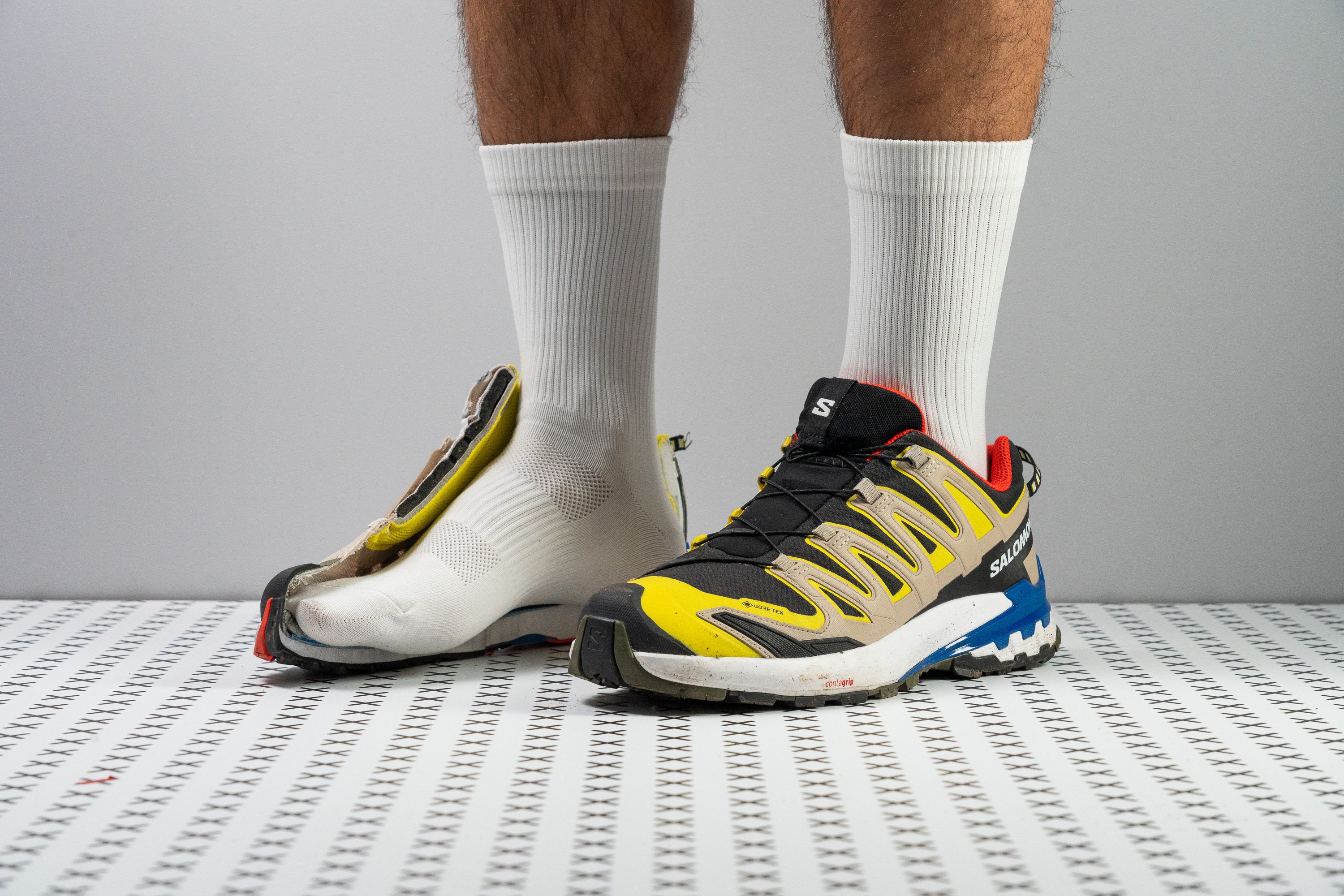













































What makes it the best?
The Salomon XA Pro 3D v9 GTX offers high protection through its impact dampening, stable platform, and grippy outsole, allowing us to explore the outdoors with ease and confidence. Based on our lab results, it delivers the best shock absorption among Salomon hiking shoes, enhancing comfort for long hours on foot.
The midsole feels well-balanced, delivering a good mix of stability and cushioning. We recorded the heel with a good 93 SA shock absorption rating, while its moderate stack height of 33.5/32.6 mm still offers some ground sensitivity, so we can adapt to various surfaces.
Moreover, the midsole includes the 3D Chassis technology, which offers strong resistance to twisting and excessive lateral movements. We confirmed this in our torsional rigidity test with a maximum of 5/5. As a result, our muscles don’t need to exert extra effort to keep our steps stable.
The Contagrip outsole helps us stay in control of our footing. With 2.8 mm lugs, it latches onto gravel, rocks, and loose ground well.
However, the shoe has limited room for toe splaying. With its tapered 75.7 mm toebox, it isn’t ideal for those with wide feet.
Pros
- Incredibly protective
- Extremely stable and supportive
- Watertight Gore-Tex upper
- Flexible and forgiving on the foot
- Makes a great hiking companion
- Effectively dampens landings
- Generously padded from heel to tongue
- No lace bite whatsoever
- Durable, high-quality construction
- Simple yet snazzy design
Cons
- Could be lighter
- Rather firm cushioning
- Upper needs breaking in
- Lacks the agility for technical trails
Best lightweight Salomon hiking shoes
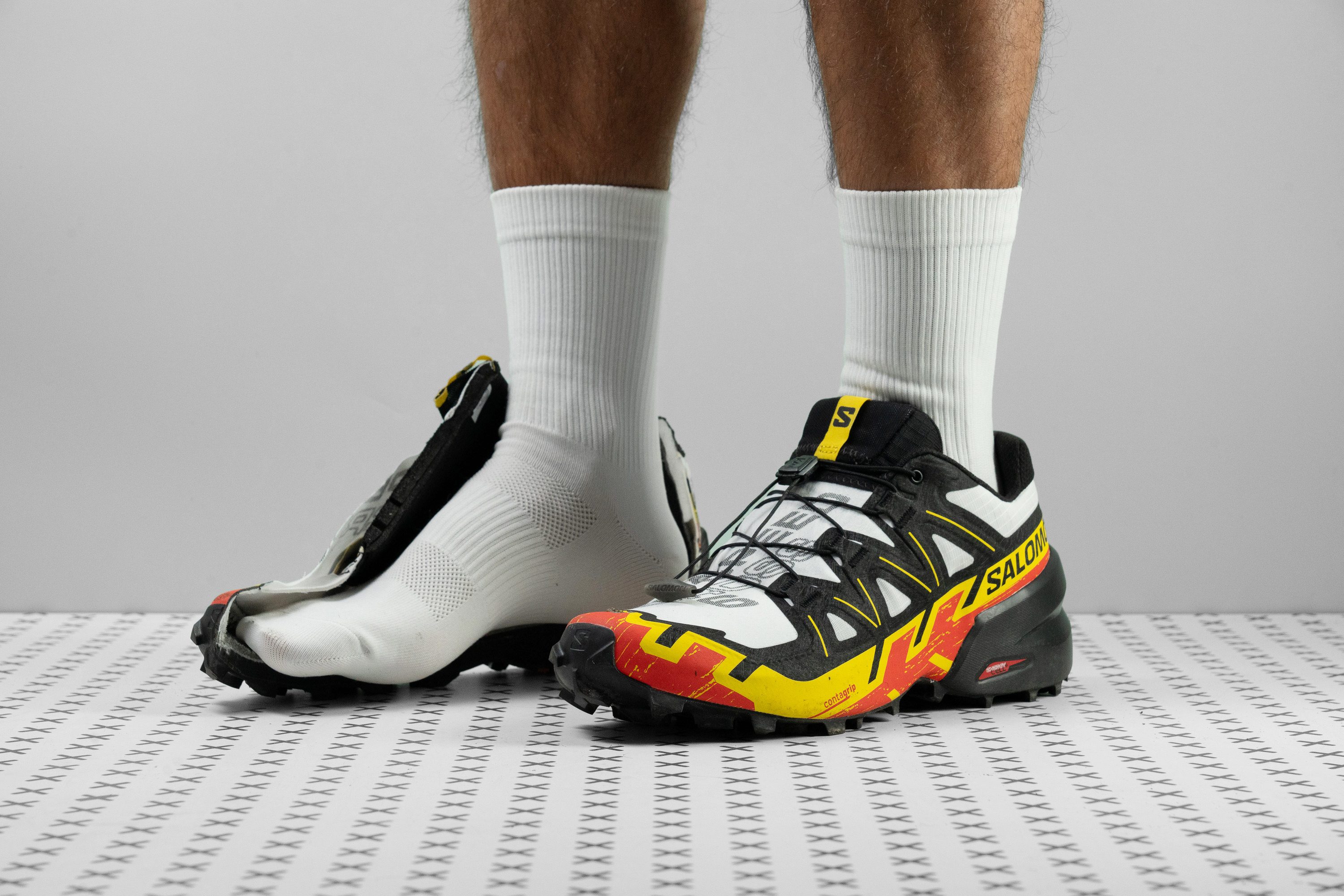



















































What makes it the best?
We trekked with ease through muddy tracks and dirt trails with the Speedcross 6. It’s our top lightweight performer among Salomon hiking shoes, excelling in agility and in handling various conditions with its flexible yet stable platform and robust lugs.
Tackling technical terrains is a breeze with its fluid and airy nature. Our scales show it’s only 10.4 oz (296g), 22.1% below the average hiking shoe and light enough for running.
In the lab, it also emerged 13.0% more flexible than average, validating the sense of nimbleness in our runs. Not only does this boost comfort for longer efforts, but it also allows us to adapt quickly to unpredictable trails.
Speedcross 6 features the reliable Contagrip outsole, confirmed by our durometer at 93.9 HC, one of the hardest we've measured. Its exceptional grip is evident even on the slickest and softest surfaces, thanks to its 5.8 mm deep, aggressively spaced lugs that provide unquestionable traction and control.
The firm midsole offers stability and ground sensitivity, proven by its low shock absorption of 96 SA. The insole is curved so that we sit inside it for added support, rather than balancing on top.
We don’t really recommend rocking this pair in the summer since they don’t breathe all that well. They will feel way better in cooler weather.
Pros
- Ideal for heel strikers
- Impressive durability
- Quick mud shedding ability
- Lightest Speedcross yet
- Secure lockdown with QuickLace system
- Enhanced ground feel in the forefoot
- Agile and responsive in fast corners
Cons
- Midsole feels like concrete
- Extremely poor breathability
- Not suitable for midfoot and forefoot strikers
- Low energy return
Best lightweight waterproof Salomon hiking shoes
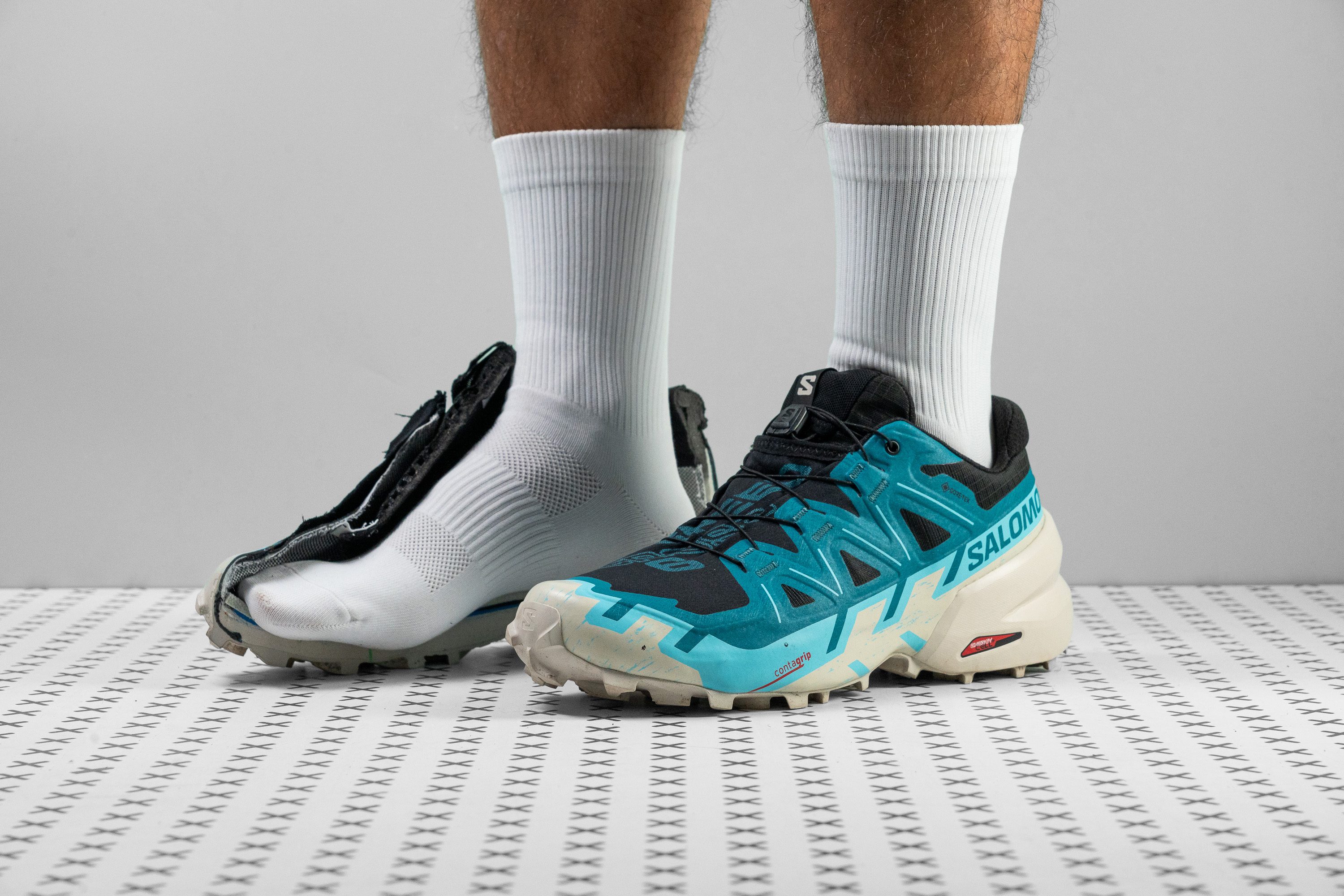
















































What makes it the best?
The Speedcross 6 GTX offers top-notch protection, from its impermeable upper to its tenacious grip underfoot. It kept us safe and sound in harsh weather conditions and on challenging trails, boosting agility through its low figure that caught our attention in the lab. Among Salomon hiking shoes, it’s our top lightweight waterproof pick.
Speedcross 6 GTX doubles as a trail running shoe, and we found it really light for the protection it brings. Our scales reveal its 11.5 oz (325g) build, making it 14.5% lighter than the average hiking shoe. We could trek for long hours because the shoes never burdened our feet.
The upper is fully waterproof, courtesy of the Gore-Tex membrane and backed up by its 1/5 breathability score in the lab. It didn’t allow any smoke to pass through the upper, just like how it kept our feet dry as we encountered puddles or rain.
Underfoot, we measured the chevron-shaped lugs to be 5.0 mm deep. For context, that’s 1.5 mm deeper than average. It shows unwavering traction even as we tackled mud or inclined segments.
However, we’re not too convinced the platform can offer deep cushioning that other hikers prefer. Its firm midsole focuses more on ground feel and stability.
Pros
- Fully functional Gore-Tex membrane
- Ample cushioning for long adventures
- Excels in challenging, technical terrain
- Rapidly sheds mud
- Agile and tenacious grip on twisted trails
- Remarkable durability
- Ideal for heel strikers
Cons
- Completely lacks breathability
- Midsole could feel overly firm for some
- Exceptionally heavy
- Narrow, snug-fitting toebox
Salomon has been outfitting outdoor enthusiasts since the 1940s. What started as a small company in the heart of the French Alps has grown into one of the most well-known companies in the outdoor sports industry.
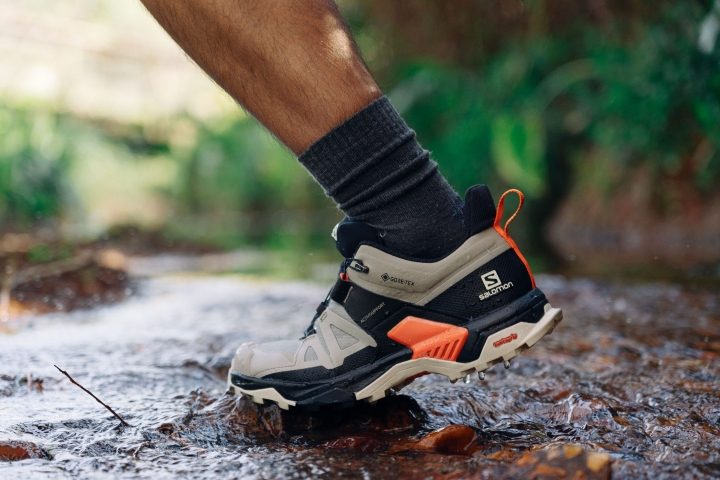
Since its inception, Salomon has continually evolved and enhanced their equipment. Nowadays, Salomon is one of the best options for hiking footwear. So if you are considering a pair of Salomon hiking shoes, you have come to the right place.
How to decide which Salomon hiking shoe is best for you
We’ve done our absolute best to help you by reviewing and coming up with the best-in-class in various categories.
But what else is important to consider when selecting which Salomon hiking shoe you intend to try?
- Terrain type
- How much weight you carry
- Duration of your hiking efforts
Terrain type
One of the most important questions you can ask yourself when shopping for Salomon hiking shoes is, “What terrain will I be hiking on the most?”
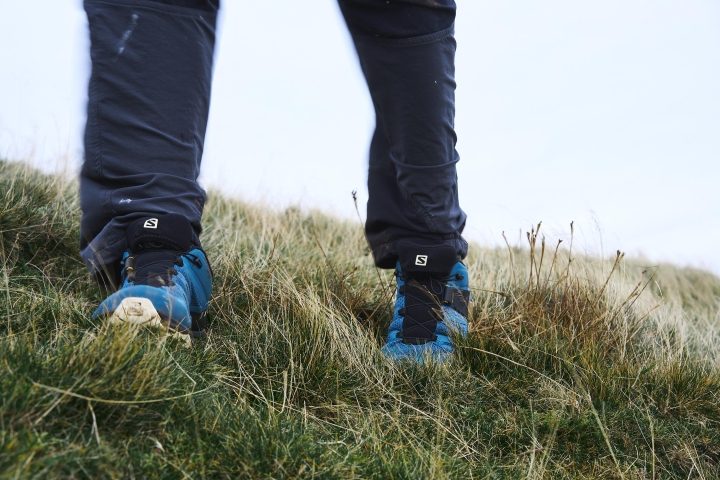
For example, do you enjoy easy trails, technical trails, or hiking off-trail the most?
- Easy to moderate trails are characterized by stable and relatively even surfaces, like fire roads and well-maintained single-track trails. These trails are typically found in larger open spaces, such as valleys and prairies.
- Technical and advanced trails are characterized by uneven terrain, including rocks, roots, steps, off-camber terrain, and steep hill climbing. These trails are found in mountainous areas with lots of undulating geographies.
- Hiking off-trail is characterized by uneven, unstable, steep, and highly technical terrain. You may need to climb over obstacles, carry out water crossings, and use your hands for scrambling. This adventurous terrain is found deep in the backcountry and away from well-established trail networks.
Lightweight, flexible, comfortable shoes may be your best bet for easy to moderate trails. These shoes prioritize cushioning over stiffness.
Example: Salomon Outpulse
On the other hand, stiffer and more stable shoes may be better for technical terrain. Similarly, shoes with extra reinforcements, like heel protectors and rubber toe caps, enhance the shoe's durability for harsh terrains.
Example: Salomon X Ultra 4

Weight of your load
Another item to consider when selecting a pair of Salomon hiking shoes is the typical weight you carry. For example, do you enjoy carrying a day pack with lots of food and water? Are you buying shoes for a multi-day unsupported backpacking trip? Or is most of the hiking you do light and fast where you only carry your phone and car keys?
Consider a more flexible hiking shoe for lighter loads, so long as the terrain allows it. On the other hand, with heavier loads, you may prefer a stiffer, more stable shoe to give you more ankle stability.
Duration of the effort
Deciding if a hike is long or short is somewhat subjective. Your fitness and experience level dictate whether something is short and easy or long and challenging. For example, a one-hour hike on easy terrain may feel long and hard for one person and easy for another.
Nonetheless, these parameters are essential to consider. Typically we recommend a lighter, more flexible shoe for more accessible and shorter efforts and stiffer and more stable shoes for more prolonged efforts.
What’s the deal with Salomon’s waterproof hiking shoes?
Salomon’s waterproof hiking shoes rely on a Gore-Tex membrane sewn into the upper’s interior to keep moisture out of the shoe. In most cases, the hiking shoe will also be treated with a durable water-repellent coating on the exterior.

Gore-Tex has long been heralded for being the best waterproof fabric. It’s made of extended polytetrafluoroethylene, or ePTFE, for short. Gore-Tex’s ePTFE materials are windproof and waterproof, and breathable.
How is that possible? The microporous material consists of small pores to keep moisture out but large enough to let dampness from your feet (sweat) evaporate. So it’s the best of both worlds.
Salomon’s waterproof hiking shoes that utilize Gore-Tex, abbreviated with GTX in the shoe's title, will keep your feet drier than non-waterproof models.
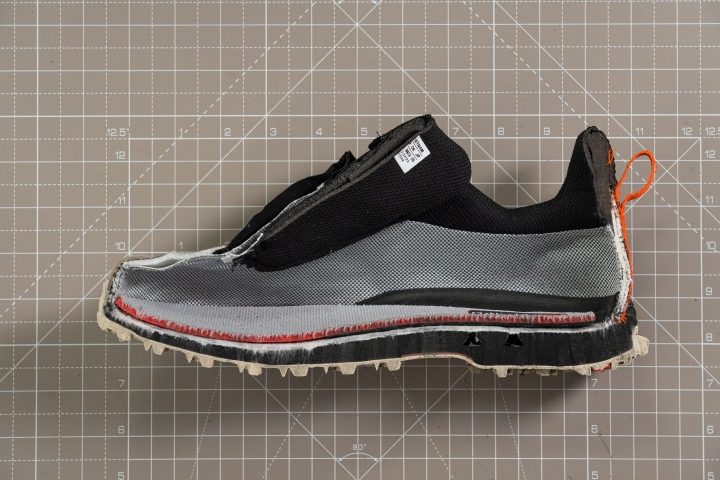
However, it is important to mention one fallback that plagues all hiking shoes, not just Salomon’s hiking shoes– the low-cut cuff.
If the water or mud is deep enough, it may flood over the top of your hiking shoe and soak your feet. Unfortunately, a Gore-Tex membrane cannot protect against this disadvantage. The only way to eliminate this possibility is to avoid terrain and climates that might have deeper water or select one of Salmon’s hiking boots with a high-top cuff.
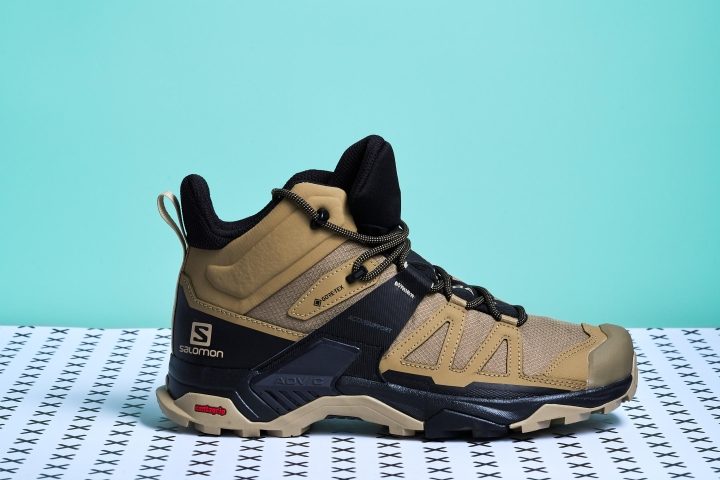
Quicklace: Salomon’s unique closure system
The Quicklace system functions like a conventional lacing system. However, instead of working with two independent laces and tying a knot, you only have to pull on a single strand to tighten the shoe.
To tighten the Quicklace system:
- First, starting at the bottom, pull on each arm of the lacing system to get the shoe to fit your foot uniformly.
- Pull the single lace at the top of the shoe as tight as you want.
- Slide the buckle down to your foot.
- Tuck the excess lace and buckle in the pocket on the shoe's tongue.
To untie:
- Remove the excess lace and buckle from the pocket.
- Secure the end of the lace, and pull it away from the shoe, so it remains taut.
- Squeeze the button on the lace and slide the buckle away from the shoe.
- If necessary, loosen the remaining arms of the lacing system to remove the shoe.
For some, the verdict is still out on the Quicklace system and whether or not it functions as well as a conventional lacing system. For example, we have found the Quicklace system to work perfectly fine with shoes that fit naturally.
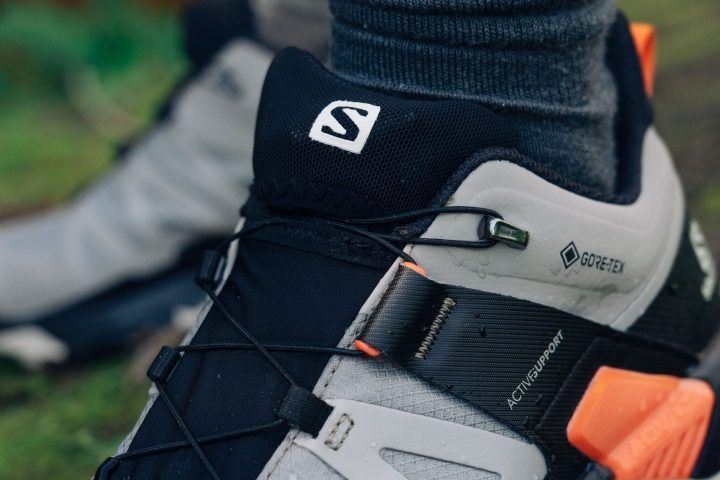
However, if you have wider or narrower feet requiring specific adjustments, you might not like the Quicklace closure system because it’s less customizable.
Trying on Salomon hiking shoes
Trying on hiking shoes is more than just putting on a pair of shoes, lacing them up, and calling it quits. Here are a few pro tips to remember when your new shoes come in the mail, and it’s time to try them on.
- Try your shoes on with the hiking socks you always wear. This sounds obvious, but if you’re like us, you may get excited when the shoes arrive and put them on the second you see them without changing your socks.
- You shouldn’t be able to feel any obvious pressure points or hot spots on your feet. If you do, then the shape of the shoe doesn’t match your foot, and breaking them in may never solve the problem.
- If you can wait, try your Salomon hiking shoes on at the end of the day. The reason is that your feet swell throughout the day, as they would during and after a hike, so it’s best to consider that when trying a shoe.
- If you fall between sizes, we recommend selecting the bigger size for the same reason– your feet swell. Plus, if the shoe remains too big, you can solve that with a new insole. The other way around is not an easy fix.
- When buying online, buy multiple pairs of hiking shoes. It’s easier to return the second pair that doesn’t fit than to return and re-order a different size. Double-check the marketplace's return policy to ensure you stick to their guidelines.
